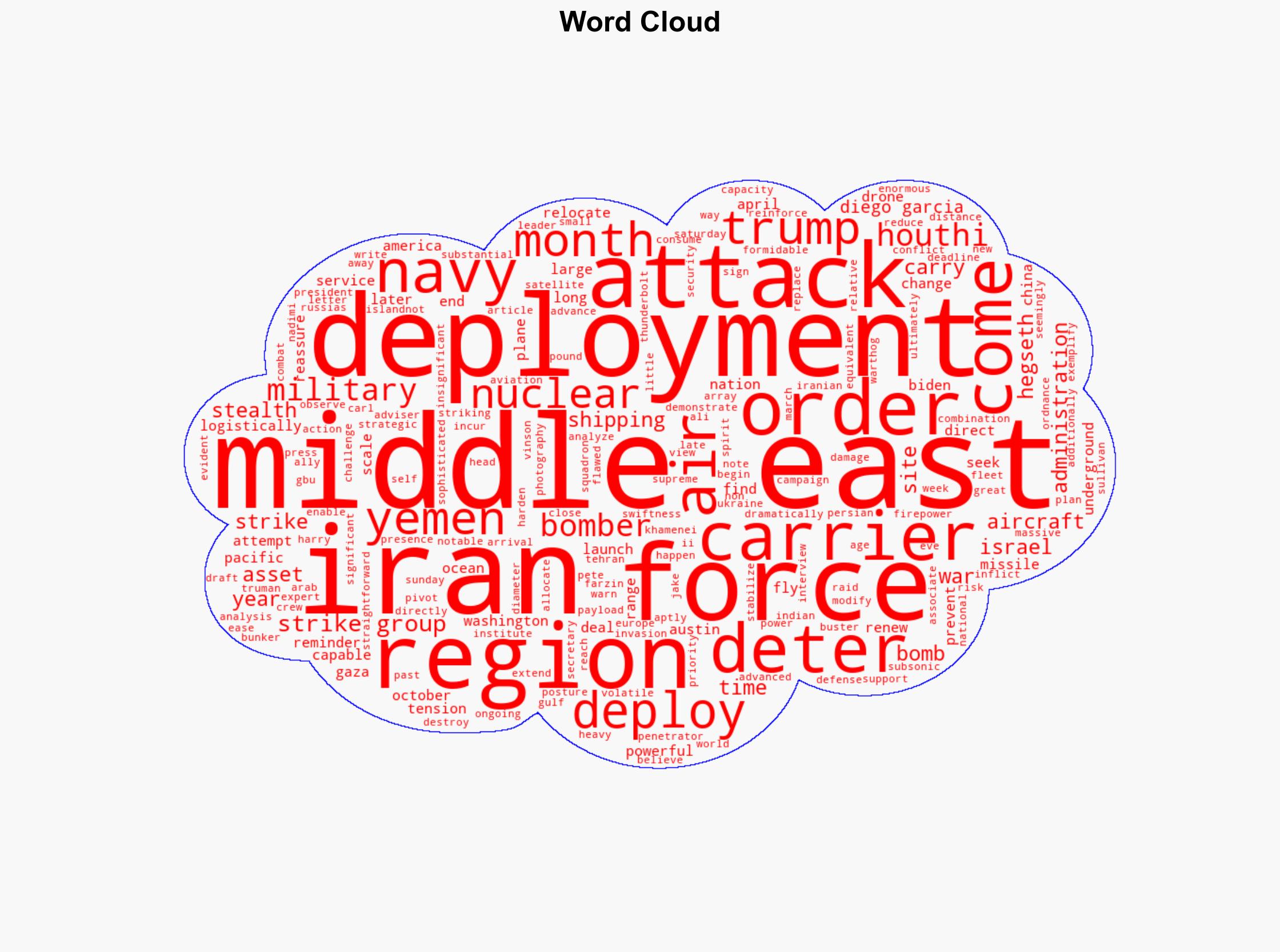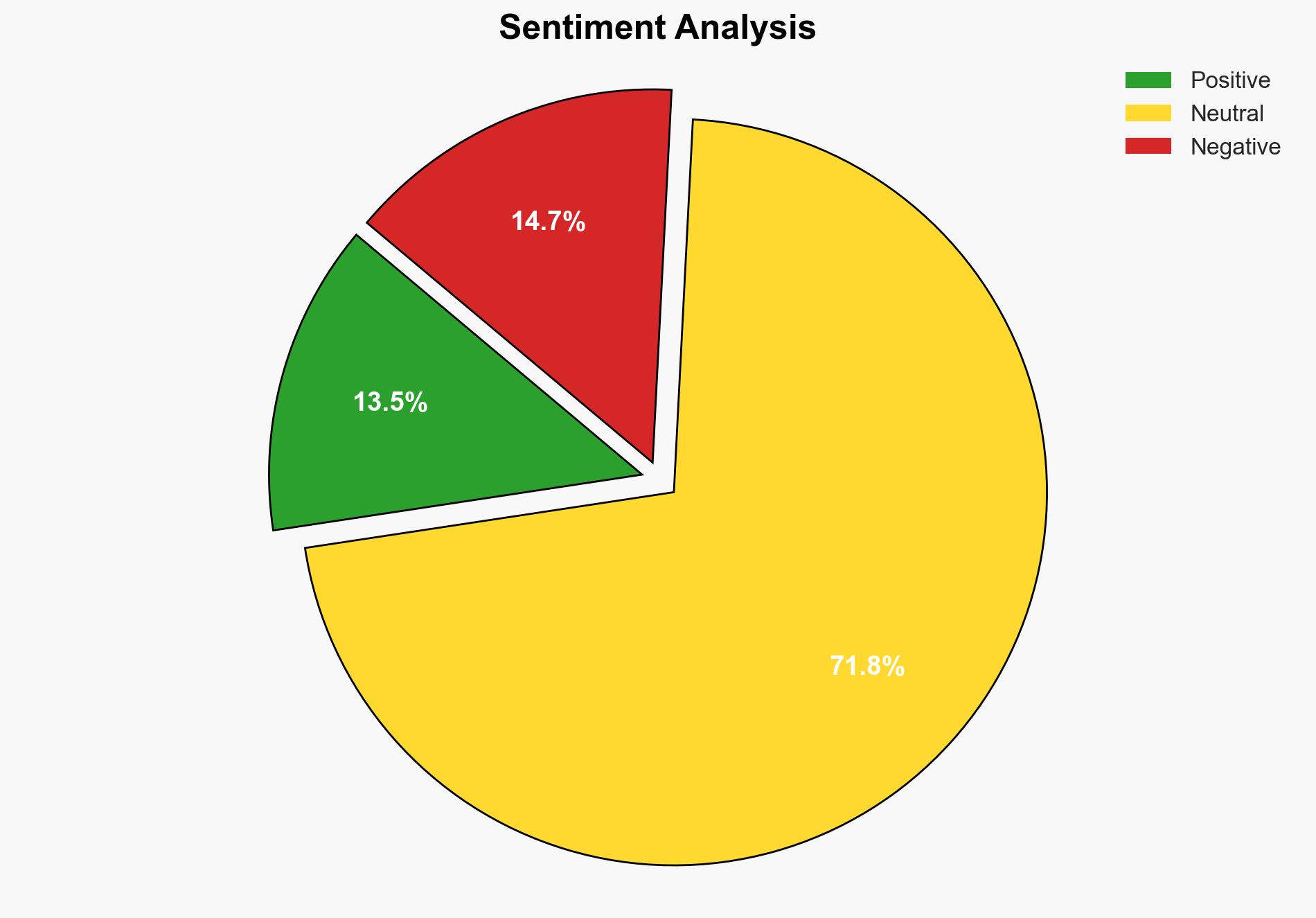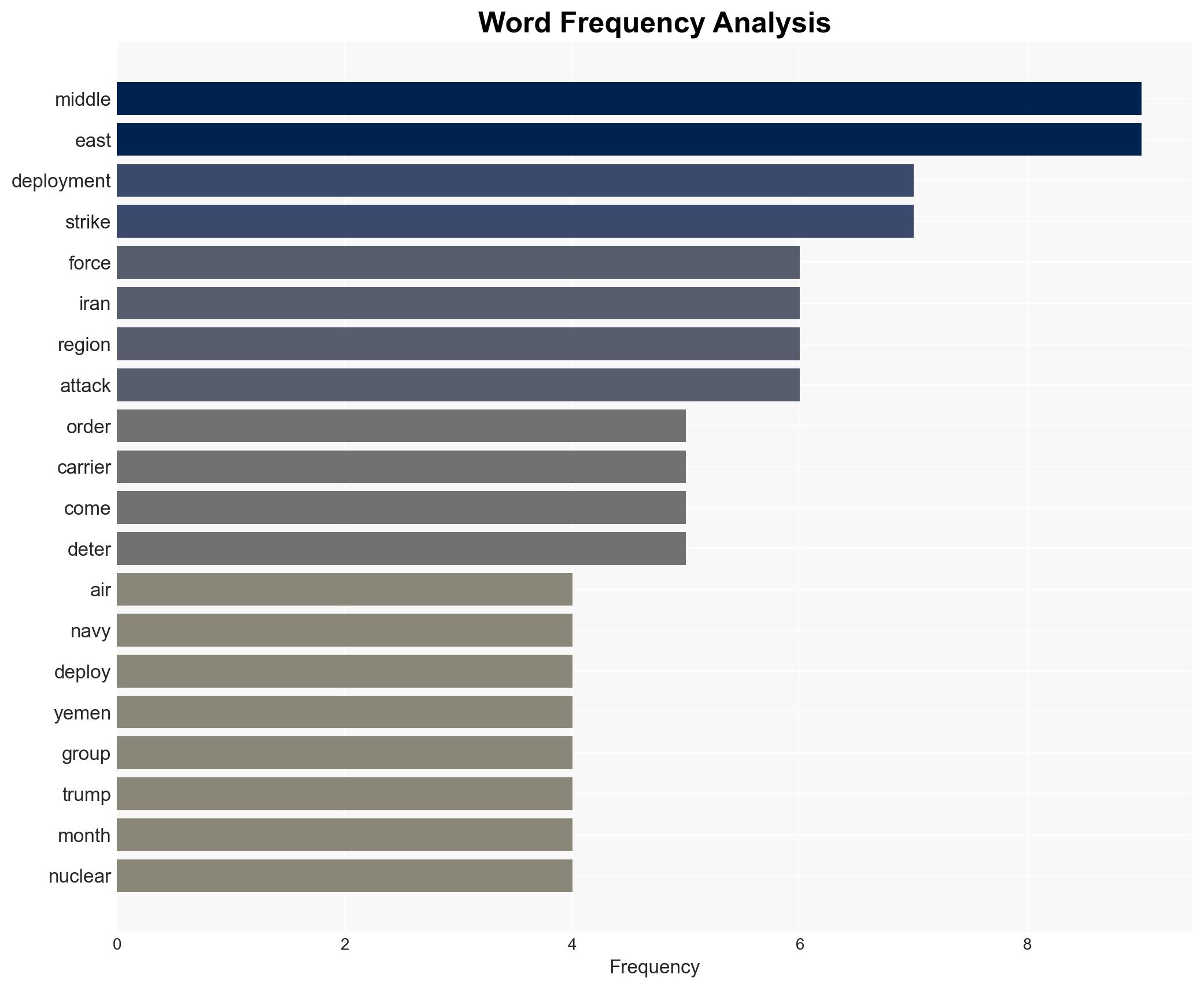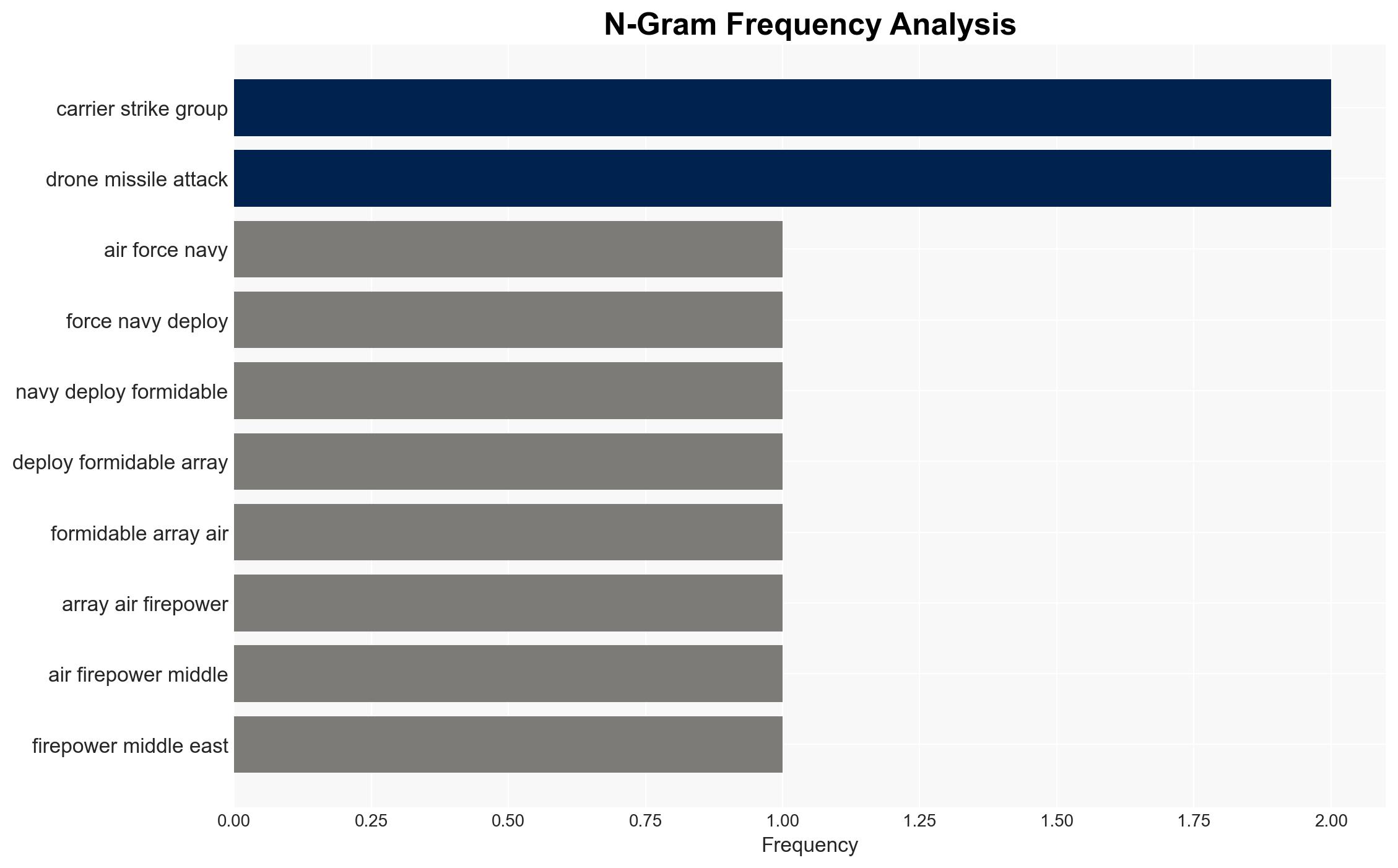A-10s To B-2s How US Middle East Force Posture Dramatically Changed – Forbes
Published on: 2025-03-30
Intelligence Report: A-10s To B-2s How US Middle East Force Posture Dramatically Changed – Forbes
1. BLUF (Bottom Line Up Front)
The United States has significantly altered its military posture in the Middle East, transitioning from subsonic attack aircraft to advanced stealth bombers. This shift reflects a strategic pivot aimed at addressing evolving threats from Iran and regional instability. The deployment of advanced air assets, including the B-2 Spirit stealth bomber, underscores a commitment to maintaining a formidable deterrent capability in the region. Key recommendations include enhancing diplomatic efforts to stabilize the region and reassessing military asset allocation to balance global strategic priorities.
2. Detailed Analysis
The following structured analytic techniques have been applied for this analysis:
General Analysis
The recent deployments of U.S. military assets in the Middle East highlight a strategic shift from a focus on counterinsurgency to deterrence against state actors like Iran. The presence of the B-2 Spirit stealth bomber on Diego Garcia enables rapid and precise long-range strikes, enhancing the U.S. ability to target fortified sites in Iran and Yemen. This shift is part of a broader strategy to reduce military presence in the Middle East while reallocating resources to Europe and the Pacific in response to threats from Russia and China.
3. Implications and Strategic Risks
The redeployment of U.S. military assets carries several strategic risks and implications:
- National Security: The focus on advanced air capabilities may deter Iranian aggression but could also provoke escalatory responses.
- Regional Stability: The withdrawal of some forces might embolden non-state actors, potentially destabilizing the region further.
- Economic Interests: Increased tensions could disrupt oil supply routes, impacting global markets.
4. Recommendations and Outlook
Recommendations:
- Enhance diplomatic engagement with regional allies to stabilize the Middle East and address underlying conflicts.
- Reassess military asset allocation to ensure a balanced approach to global threats, particularly in Europe and the Pacific.
- Invest in intelligence and surveillance capabilities to monitor and preempt potential threats.
Outlook:
Best-case scenario: Diplomatic efforts lead to a new nuclear agreement with Iran, reducing regional tensions and stabilizing the Middle East.
Worst-case scenario: Escalation of hostilities with Iran leads to widespread conflict, disrupting global oil supplies and destabilizing the region.
Most likely scenario: Continued tension with periodic flare-ups, requiring sustained U.S. military presence and diplomatic efforts.
5. Key Individuals and Entities
The report mentions significant individuals and organizations, including Pete Hegseth, Donald Trump, Ali Khamenei, Jake Sullivan, Farzin Nadimi, and Lloyd Austin. These individuals play critical roles in shaping the strategic landscape and influencing policy decisions.





